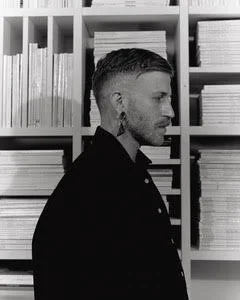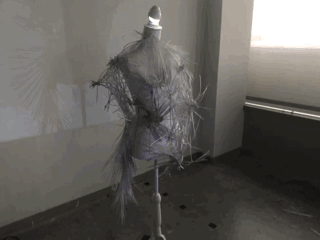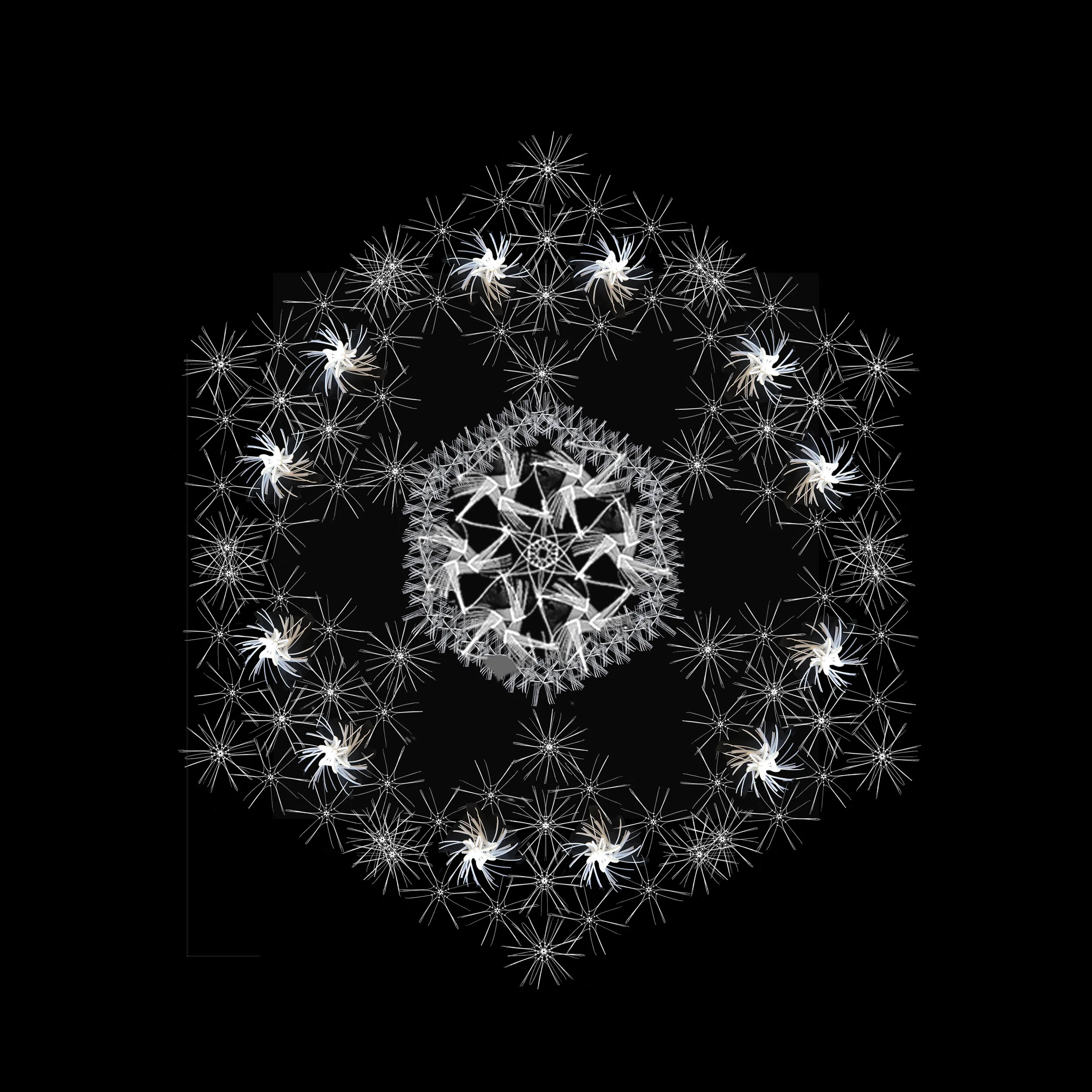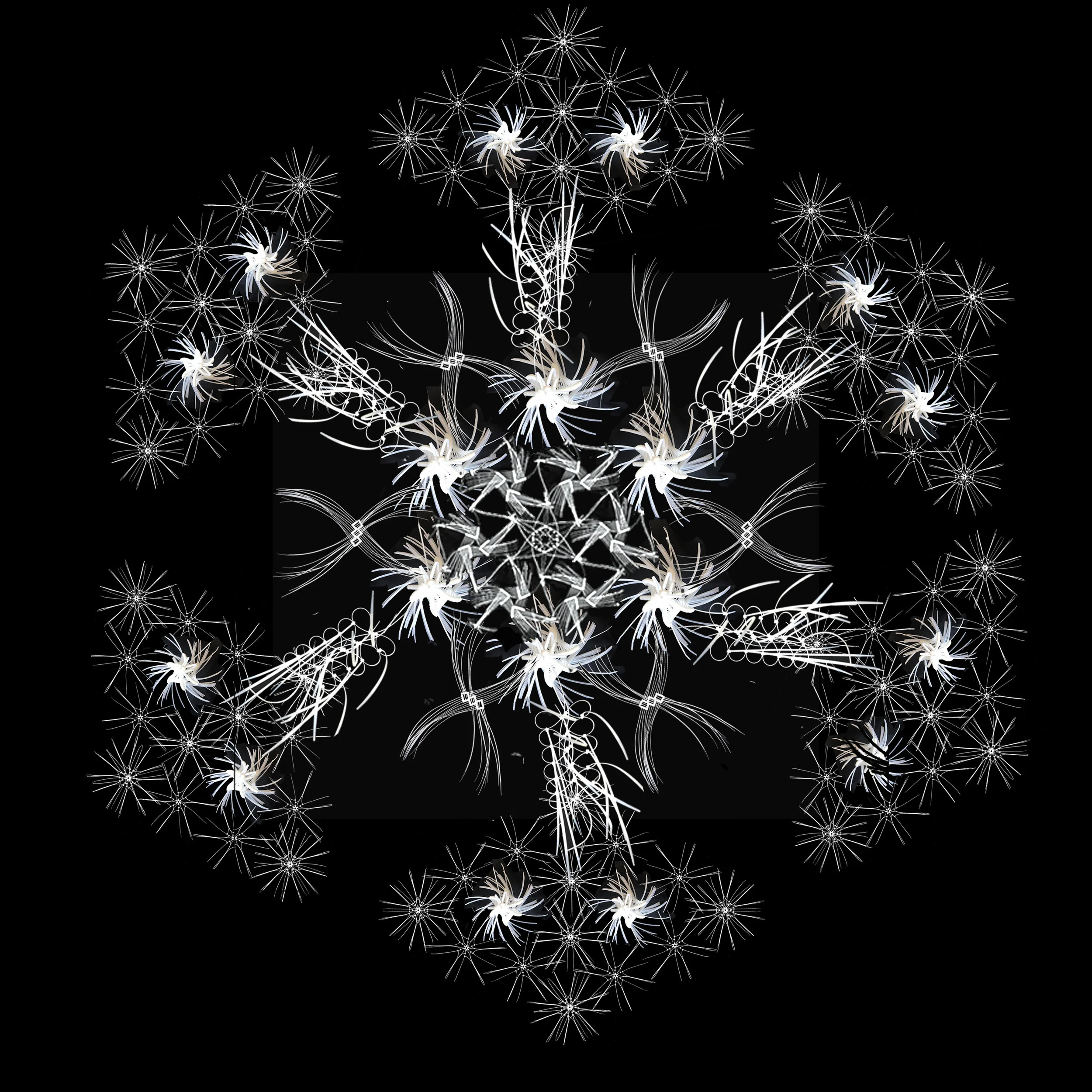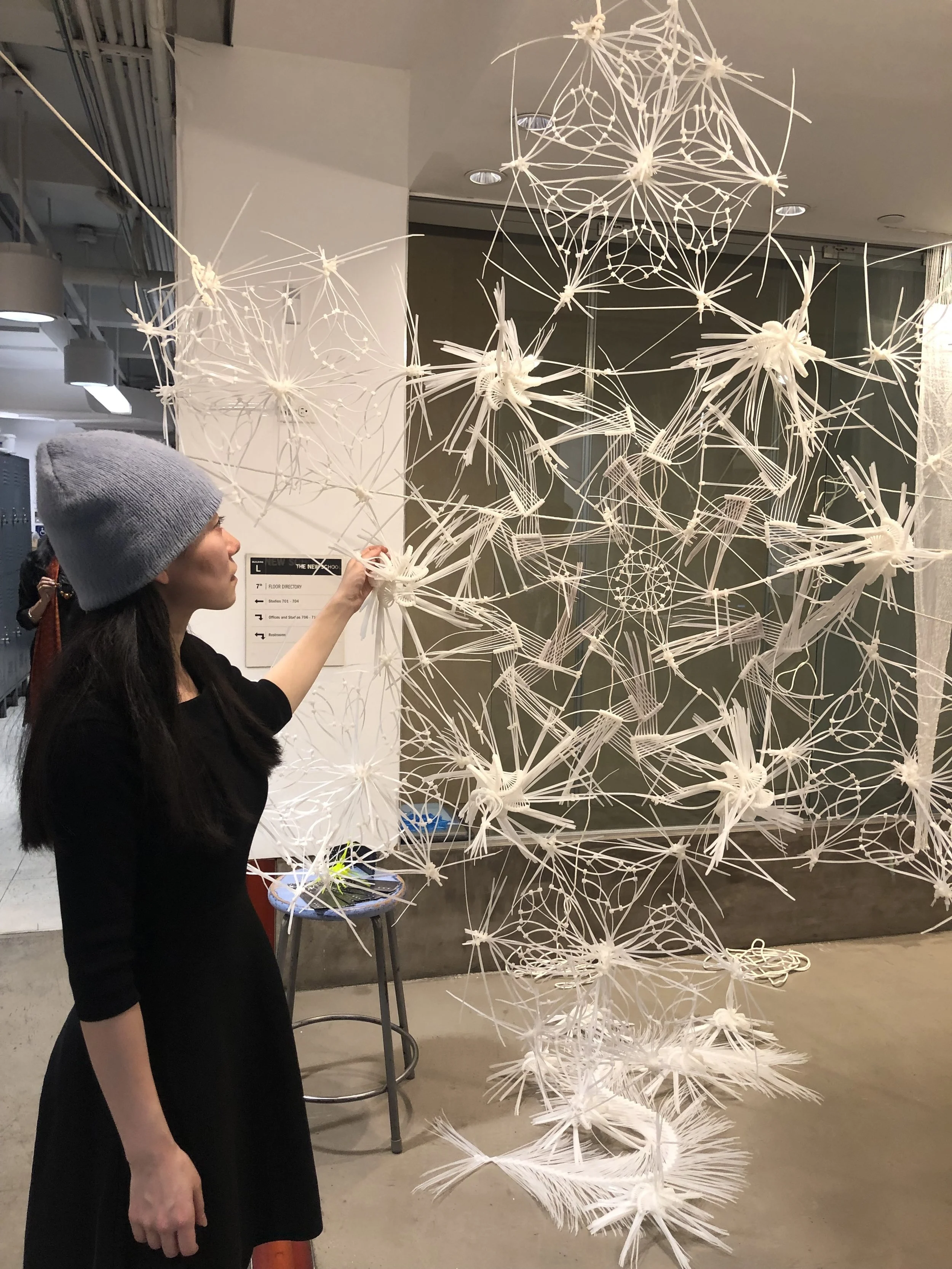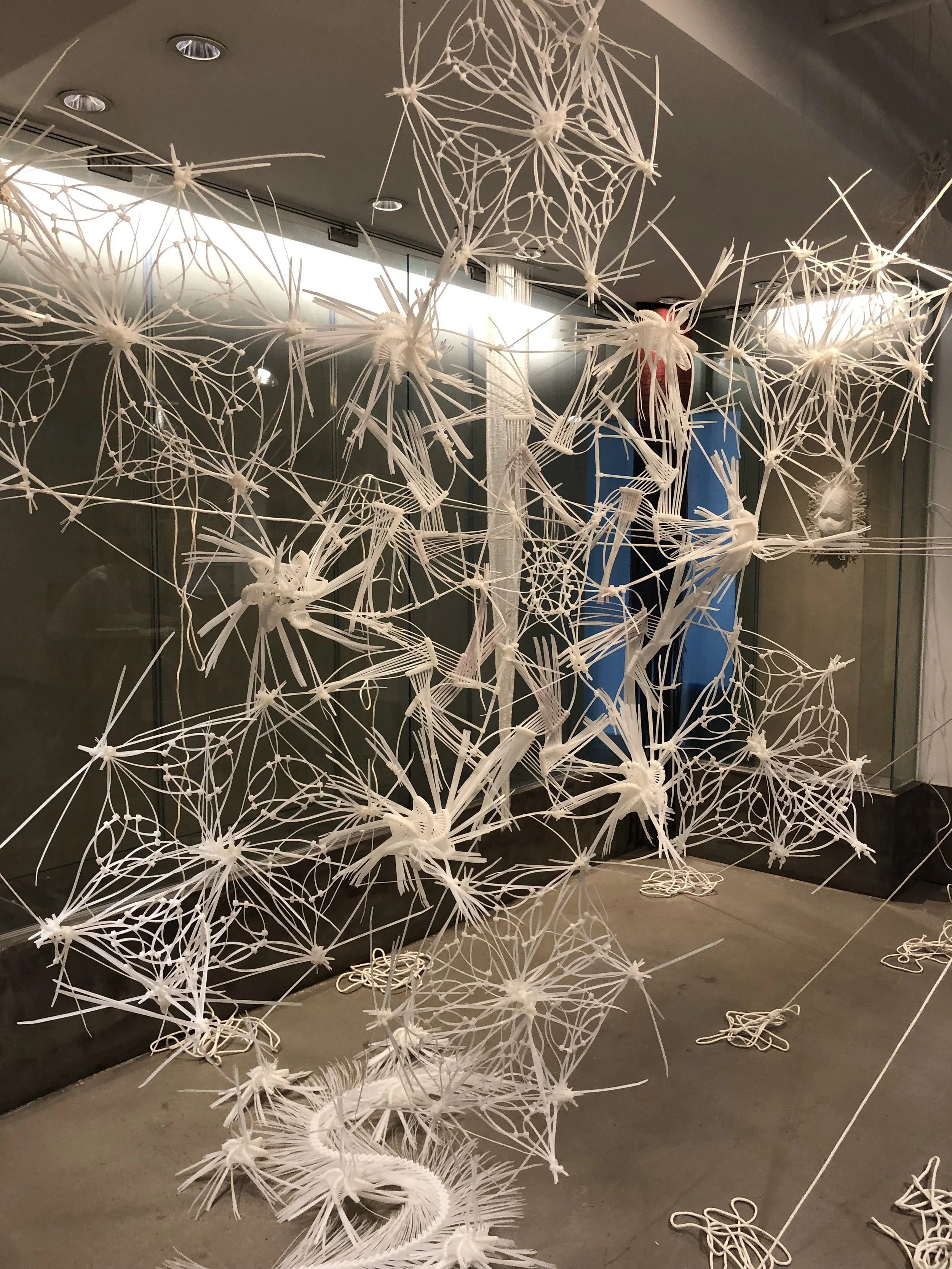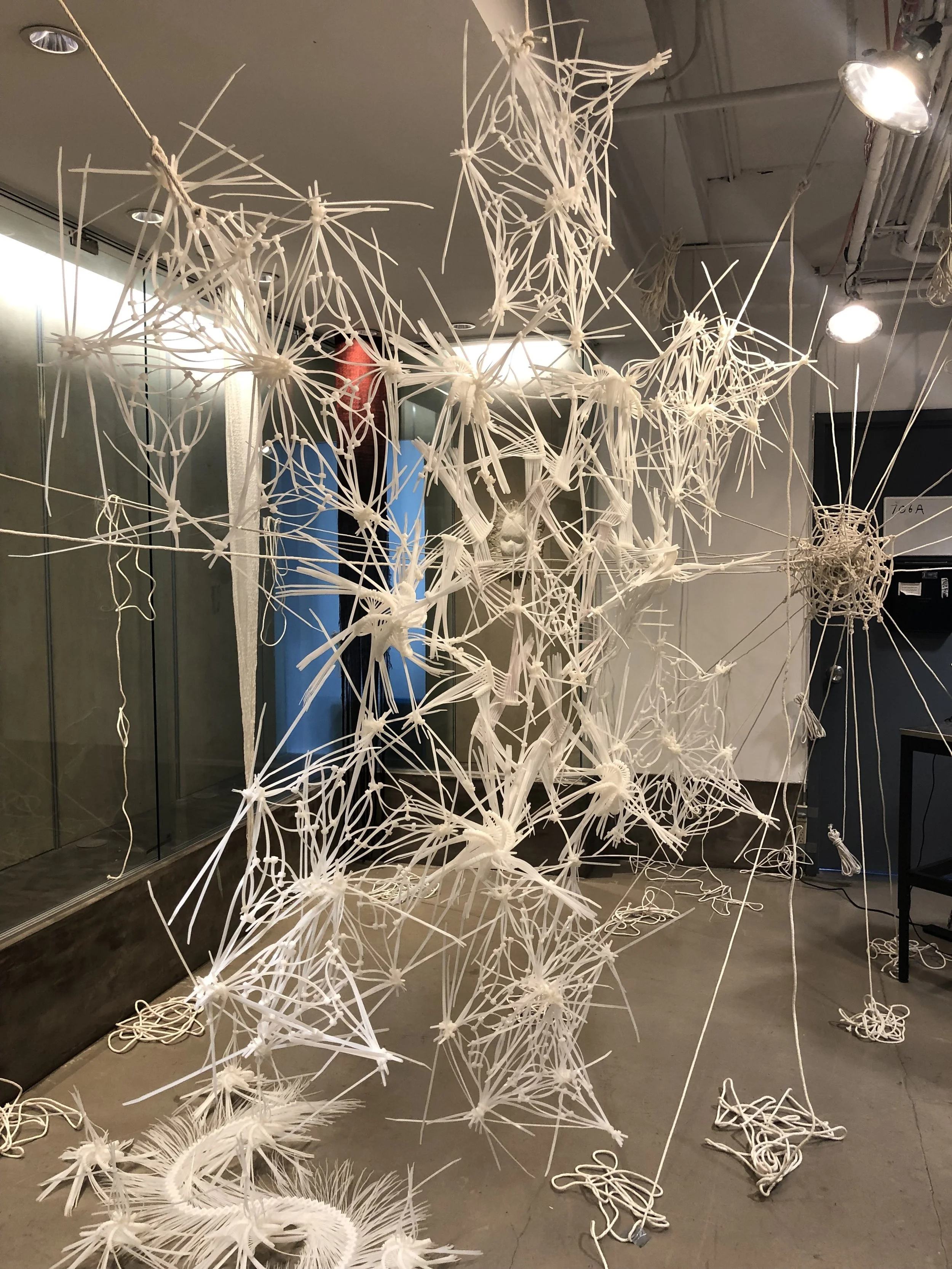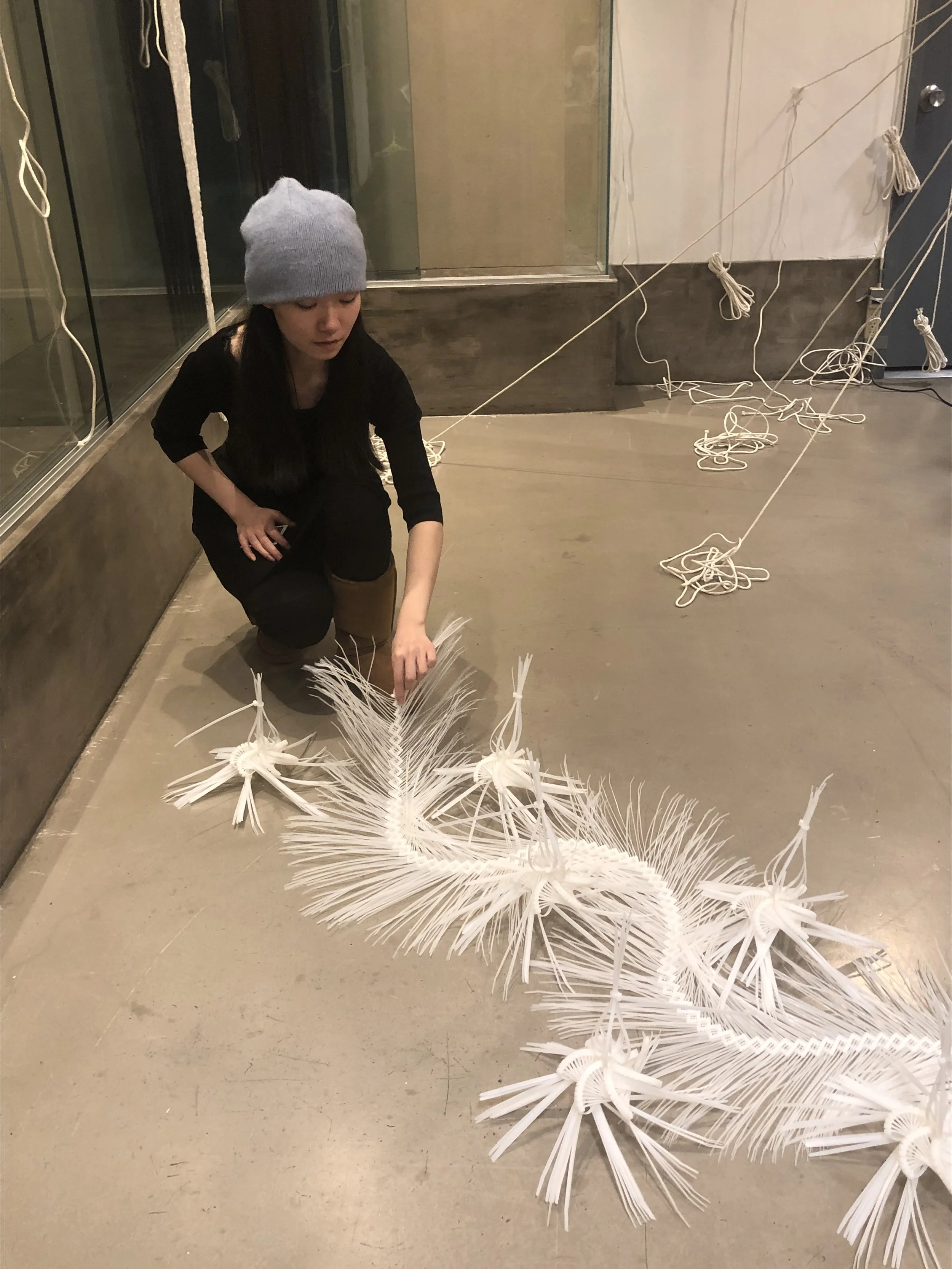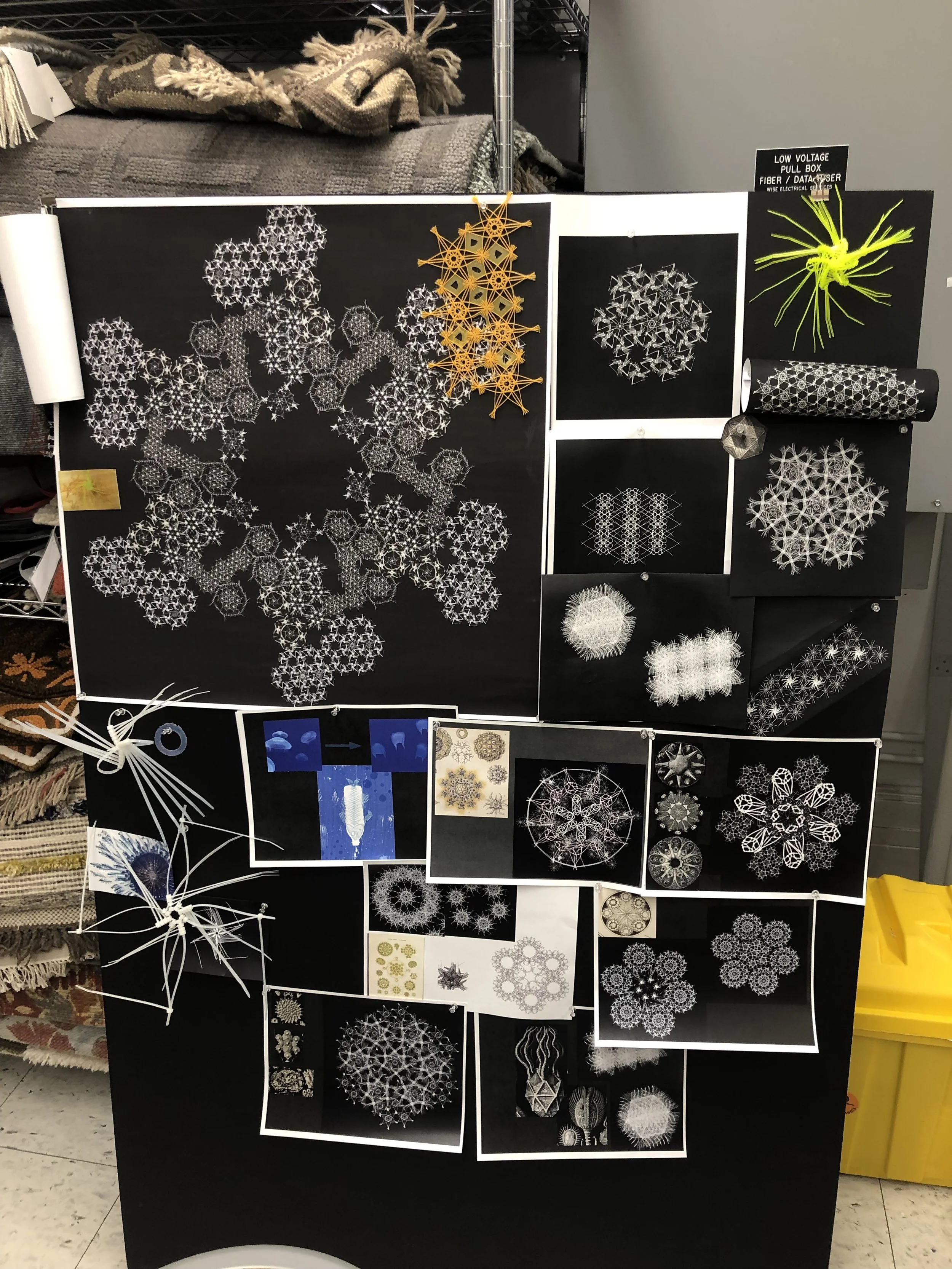Exoskeleton: Plastic?
Keywords: Up-cycling, Plastic ties, Wearable, Installation, Projection
“Exoskeleton:
The soft accessory …
Plastic?”
… is biomimetic
Phase I- Urban Artery: Upcycling Accessory
People unwittingly become an essential part of the path they created for civilization. Humans are, from a macro perspective, blood cells in city arteries.
This project mainly portrays the point structure, tension, and population density image of human flow in the urban artery.
In this section, I took use of material characteristics and allowed them to germinate on the human body. Furthermore, several mathematical theories, such as the Fibonacci sequence were introduced to study the aesthetics of construction. The textile accessories with a clean structure display the nodes and tension with the beauty of flowing fields.





“GORGEOUS! Ethereal. Flawless!”














